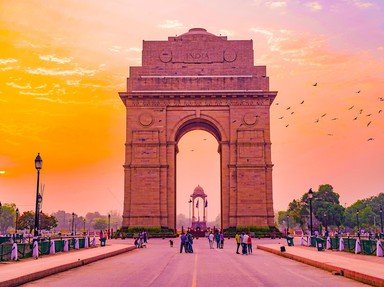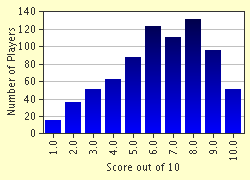Quiz Answer Key and Fun Facts
1. Keshab Chandra Sen is one of the renowned leaders of this movement - it was born out of differences of opinion amongst members of another movement. This movement (or rather the organization) was first formed in 1866.
2. One of the most famous social reformers, he was born to an orthodox Bengali Brahmin family in 1774. His first article appeared when he was sixteen, in which he condemned idol worship by Hindus, as a result of which he was thrown out of his house! To purify Hinduism from various 'evils' that he believed had crept into it, he decided to form a new society called 'Brahmo Samaj'. Who was he?
3. This social reformist joined the Hindu College of Calcutta in 1826 (at the age of 17) as a teacher. He encouraged free thought and inquisitiveness of the part of his pupils. His students were collectively called 'Young Bengal' and they refused to accept various rites and rituals that were prevalent in India at that time. What is the name of the teacher?
4. A very famous Bengali, he was instrumental in the foundation of the Hindu Balika Vidyalaya at Calcutta. This was one of the earliest schools committed towards education of females. He also campaigned for reformation of the Hindu marriage system. It was through his efforts that the Widow Remarriage Act, 1856 was enacted by the Government. Who was this learned and revered person?
5. This society was formed in 1864 by K. Sridharalu Naidu. This movement was inspired to fight the causes of Brahmo Samaj in South India. In 1871, the name of this society was changed to Brahmo Samaj of South India. What was this society known before that?
6. This movement was based and carried out reforms in Western India. Founded in 1866 by Mahadev Govind Ranade, this movement took inspiration from religious sermons by Tukaram and Jnaneswara. This society had distinguished scholars like Ramakrisha Bhandarkar in its ranks. What was the name of this society?
7. This religious movement was started with an intention to teach people about Hinduism in its pure form. Dayanand Saraswati founded this movement in 1875. The members of this movement were guided by ten principles, one of which was studying of Vedas. The rest were on virtue, morality and humility. This movement sought to remove caste distinctions and social inequality (rampant at that time). What was the name of this religious movement?
8. Swami Vivekanand participated in the Parliament of Religions, held in Chicago (U.S.A) in 1893.
9. He was a priest at a temple at Dakshineswar (near Kolkatta). Social reformers like Dayanad Saraswati, Keshab Chandra Sen used to come to him for advice and religious discussions. After his death, one of his pupils Swami Vivekanand founded a mission named after him.
10. To improve the condition of the Moslems in India, this reformist founded many a movement. He was known for his efforts to improve Moslem-British relations. His greatest achievement was the founding of the Mohammedan Anglo-Oriental College at Aligarh in 1875.
Source: Author
ace_sodium
This quiz was reviewed by FunTrivia editor
coolupway before going online.
Any errors found in FunTrivia content are routinely corrected through our feedback system.

